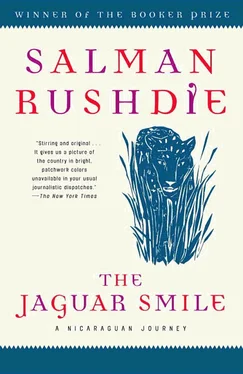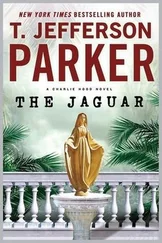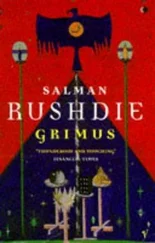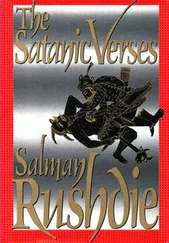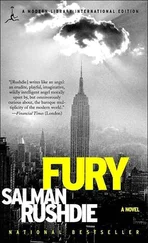My depression deepened. ‘So,’ I asked unhappily, ‘are such matters as the freedom of the press just cosmetic?’
His face lit up, and he nodded enthusiastically. ‘Cosmetic, that’s the word. Yes.’
‘Everybody censors the press in wartime.’ That was the official line on the subject, and I heard it from my anonymous Barricada friend, from Daniel Ortega, from all quarters. It wouldn’t do. I remembered being in Pakistan during the 1965 war with India, and how it felt to be fed information about which the only certain thing was that it was hopelessly and deliberately misleading. I remembered learning to divide Pakistani claims to have shot down Indian planes by ten, and to multiply the admitted losses by the same factor. Then the two figures began to balance up, and you had the illusion of truth. I remembered, too, my outrage at the British government’s manipulation of the news media during the Falklands/Malvinas war. What had been unacceptable to me there was also unacceptable here.
The issue of press freedom was the one on which I absolutely parted company with the Sandinistas. It disturbed me that a government of writers had turned into a government of censors. Largely because of this issue, a kind of silent argument raged in my head throughout my stay. I would tell myself that something remarkable was being attempted here, with minimal resources and under great pressure. The land reforms, and the health and literacy campaigns of 1980 and 1981, the years before the start of US aggression, showed what could be achieved. The literacy campaign, for instance, had brought the percentage of illiterate Nicaraguans down from more than fifty per cent to less than twenty per cent in two years. Now, however, the diversion of manpower into the war effort meant that the initial campaign had not been properly followed up, and illiteracy was creeping forward once again, like a jungle reclaiming a neglected clearing … Then I would argue back: those campaigns are all very well; but they think that dissent is cosmetic. And Barricada is the worst paper I’ve seen in a long while.
The argument usually ended in the same place. Nicaragua was an imperfect state. But it was also engaged in a true revolution: in an attempt, that is, to change the structures of society in order to improve the lives of its citizens. And imperfection, even the deep flaw of censorship, did not constitute a justification for being crushed by a super-power’s military and economic force.
Mario Vargas Llosa wasn’t in Nicaragua, but in the quiet of my room I would dispute with him, too. He had written and spoken so frequently, and with such skill, about the importance of supporting the democratic process in Latin America; he insisted that it was the only way to break the cycle of revolution and dictatorship. He justified his support for parties and governments of the right in his native Peru by saying that he preferred ballots to bullets; that a flawed democracy was infinitely preferable to no democracy at all.
Peru was a flawed democracy of the right. Nicaragua was a flawed democracy of the left. If democracy were really Vargas Llosa’s goal, then Nicaragua, according to his own declared principles, was exactly the kind of state he ought to be supporting, and fighting to improve.
I wondered, into the silence, why he did not.
5

ESTELÍ
At five a.m. on the morning of 19 July, the day of the seventh anniversary celebrations, I went to the home of Daniel Ortega and his wife, the poet Rosario Murillo. After getting past the usual compound walls and guards, I entered a rambling bungalow of many verandahs and large numbers of carved wooden rocking-chairs. The decor reflected Rosario Murillo’s interest in the country’s arts and crafts: there were brightly coloured wooden animal mobiles dangling from the beams, and pottery decorated with pre-Columbian motifs, and cushions covered in the softened bark of trees. The house revealed very little about Comandante Daniel, for whom, it seemed, reticence had become (had always been?) second nature. Children’s toys, and indeed children, were everywhere. There was no shortage of little Ortegas, and many of them, I noted, were wearing ‘Masters of the Universe’ T-shirts, featuring the eternal battle of He-Man and Skeletor; another indication of the omnipresence of US culture.
The Sandinista leadership assembled. This year, the main ‘Acta’ or celebratory event was to be held at Estelí, the northern town, just forty kilometres from the Honduran frontier, that had always been solidly behind the Frente. (Even the local bishop was the most amenable member of the Nicaraguan church hierarchy.) The decision to hold the Acta at Estelí was an act of defiance, and it was a racing certainty that the Contra forces would be doing their best to ruin the day. ‘We will show them we can defend our frontier,’ Daniel Ortega said.
Pragmatically, four of the FSLN ‘nine’ stayed behind in Managua, as did Sergio Ramírez. We set off in convoy, preceded by the now-familiar outriders in their orange washing-up gloves. Their hands, I thought, must get terribly hot and sticky in there.
The Nicaraguan people knew what to do when the rubber gloves approached: they got out of the way. We zoomed northwards. Daniel Ortega drove his own, black Landcruiser. I travelled behind him with Rosario Murillo and two of the ‘nine’, the agriculture minister Jaime Wheelock and the FSLN’s political chief, Bayardo Arce, in Comandante Arce’s vehicle. Arce looked impatient as we bowled along (he has a reputation for being something of a speed merchant). Scarecrow Ronald Reagans hung — by the neck — from roadside trees.
Arce munched on an enormous cigar as we crossed the bridge at Sébaco. ‘It would be a good day,’ he remarked absently, ‘for the contra-revolución to attack a bridge.’
‘Hmm,’ I agreed, keeping my voice deep and courageous. The road was lined with members of the peasant militias in fatigues, carrying their Kalashnikovs. ‘We decided to use the militias for security purposes today,’ Arce said. ‘We couldn’t pull the troops in from the frontier, as you’ll understand.’
‘Hmm,’ I agreed again. In Sébaco, I noticed, you could go and play bingo at the Red Cross building. They obviously didn’t get too much work, I reassured myself.
‘The security seems excellent,’ I mumbled. Jaime Wheelock, baby-faced and friendly, grimaced. ‘There are a lot of roads,’ he said. ‘We can’t guarantee that they are all safe.’
‘Oh,’ I said. ‘I see.’
Wheelock was worried that the Contra would hide out along the smaller mountain roads and ambush the campesinos as they made their way to Estelí. Many rural communities had been instructed not to try and make the trip into town for the Acta for this reason. ‘We are trying to keep it as much of a local event as possible,’ Wheelock said. ‘In a way it’s a tribute to the people of Estelí, who have sacrificed very much.’
The mountains were closing in ahead of us. We were in a heavily cultivated valley, and suddenly Wheelock launched into his favourite subject: agrarian reform. It was extraordinary the way that cherubic countenance would light up the moment the talk got round to pigs or coffee or rice. In this valley, he said, the mixed economy was functioning perfectly. That, over there, was a large private farm, and there were some small private farmers and over there, state-owned farms. The state offered the private sector expert advice, technical assistance and even acted, at peak harvest times, as a supplier of labour.
‘The campesinos used to be forcibly shunted around the country under Somoza, didn’t they?’ I asked. ‘So how is it that they are so willing to become travelling labourers for the revolution?’
Читать дальше
